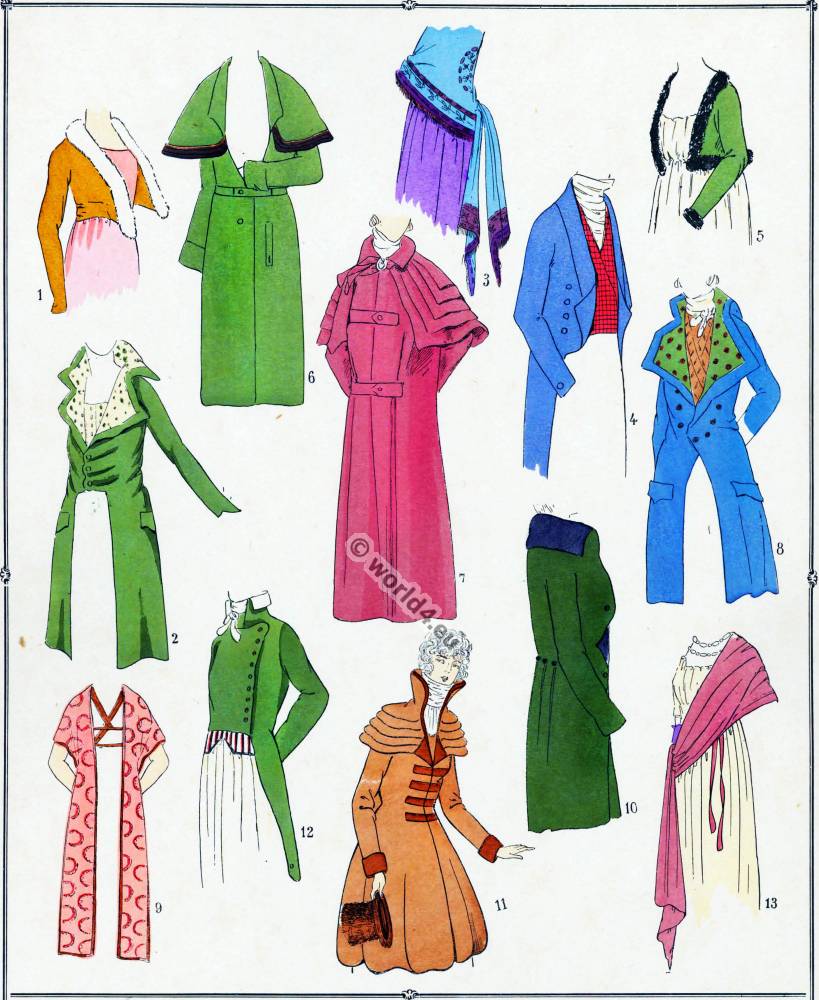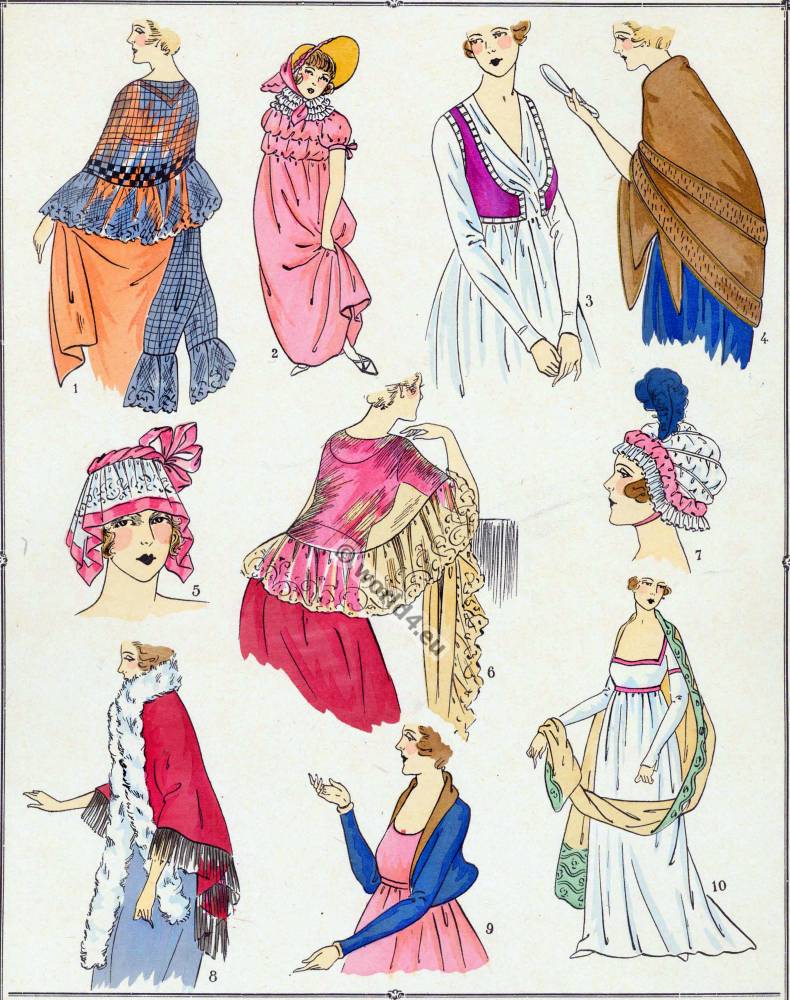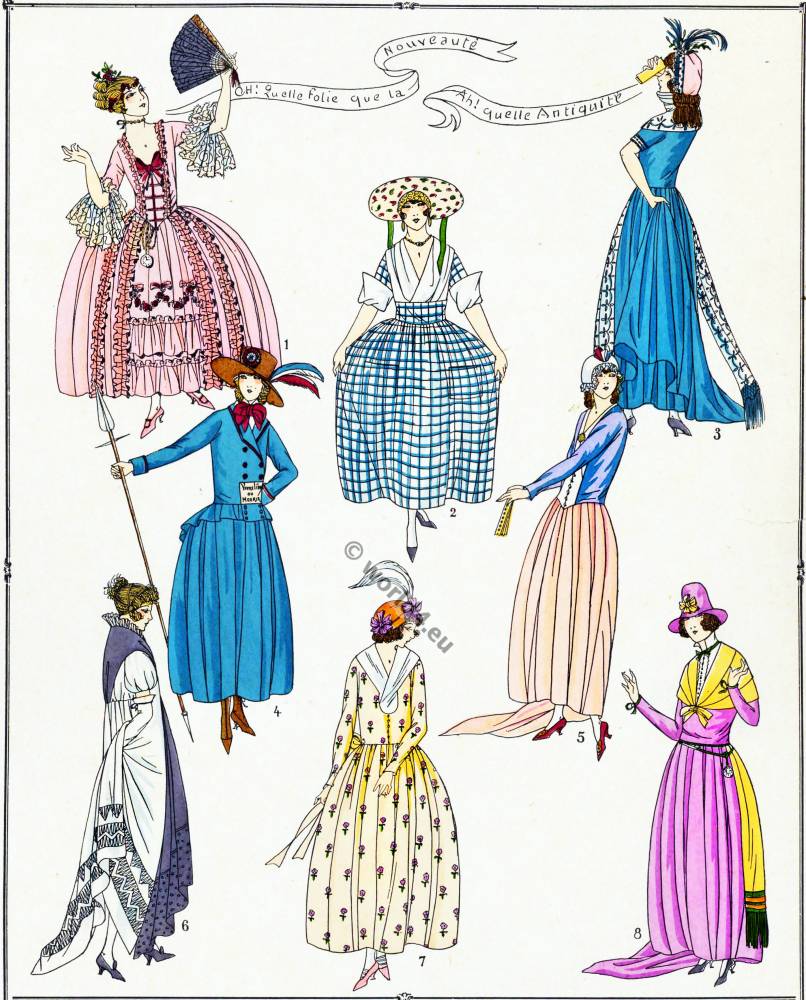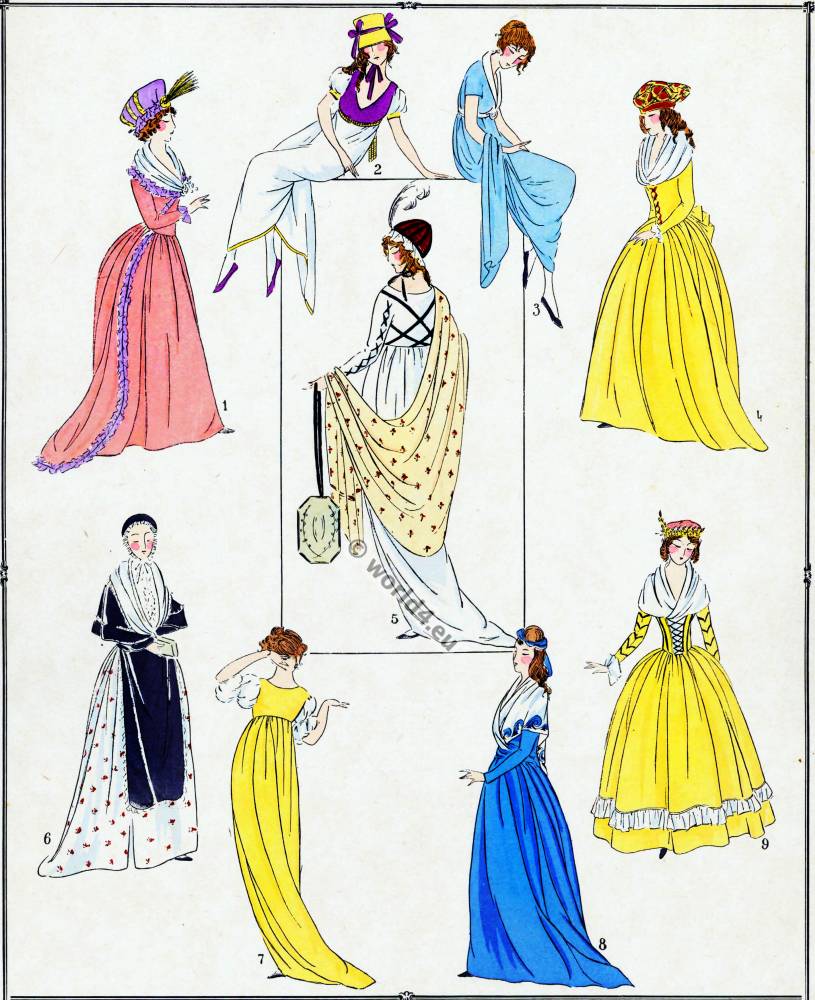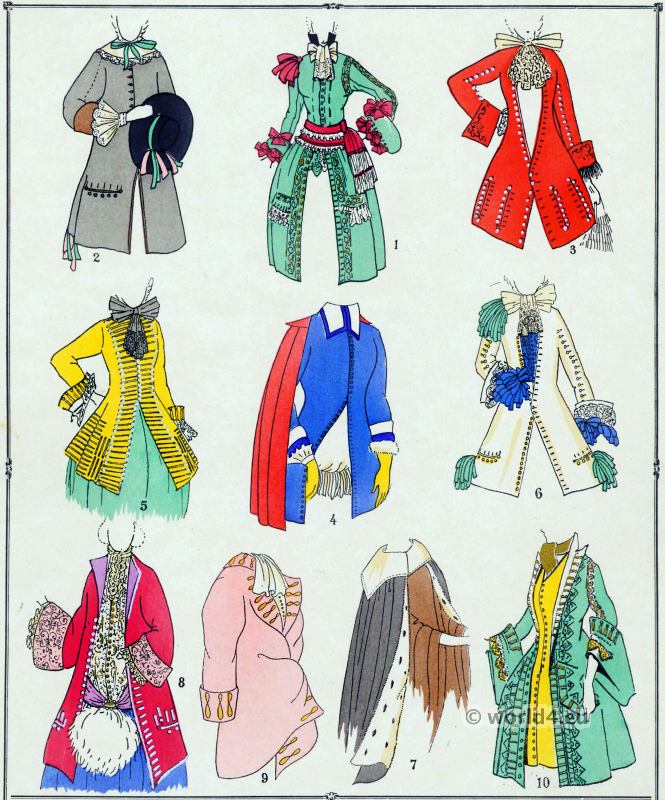L’histoire du costume féminin français. Les Modes sous la Revolution 1792 – 1799. Manteaux – Planche 3.
Manteaux
- Spencer en drap beige garni d’un bord de fourrure blanche, manche longue et étroite.
- Manteau redingote en reps vert bouteille, garni de poches, larges revers et col garnis d’un tissu jaune à pois verts.
- Châle fond bleu, bordure rouge brique, frange de même teinte, robe violette.
- Redingote bleu vif, à larges revers descendant à la taille, ouvrant sur un gilet rouge, formant carreaux, fines rayures noires.
- Spencer vert véronèse, garni tout autour de marabout noir. Robe blanche.
- Manteau droit jaune vert à large collet retombant en pèlerine sur les épaules, poche, galons noirs au collet.
- Carrick révolutionnaire à cinq collets, en drap rouge brique, fermant par deux pattes à la poitrine et à la taille, col haut fermé.
- Manteau redingote bleu vert fermant à la taille, larges revers garnis de toile imprimée à fleurs rouges sur fond vert.
- Redingote formée d’un châle long, fond orange’ fleurs rouges.
- Large redingote verte à grand collet de velours noir, plis dans le dos retenus à la taille par trois boutons.
- Manteau cintré à basques amples, à cinq collets, col très haut, en drap marron clair, garni devant de pattes en marron foncé, chapeau en peluche marron.
- Manteau à basques derrière, en drap vert, boutonné sur le côté, laissant passer un gilet blanc et rouge. Cravate de linon blanc.
- Echarpe rose violacé sur une robe beige. Pans de ceinture rouges.
Source:
Related
Discover more from World4 Costume Culture History
Subscribe to get the latest posts sent to your email.

